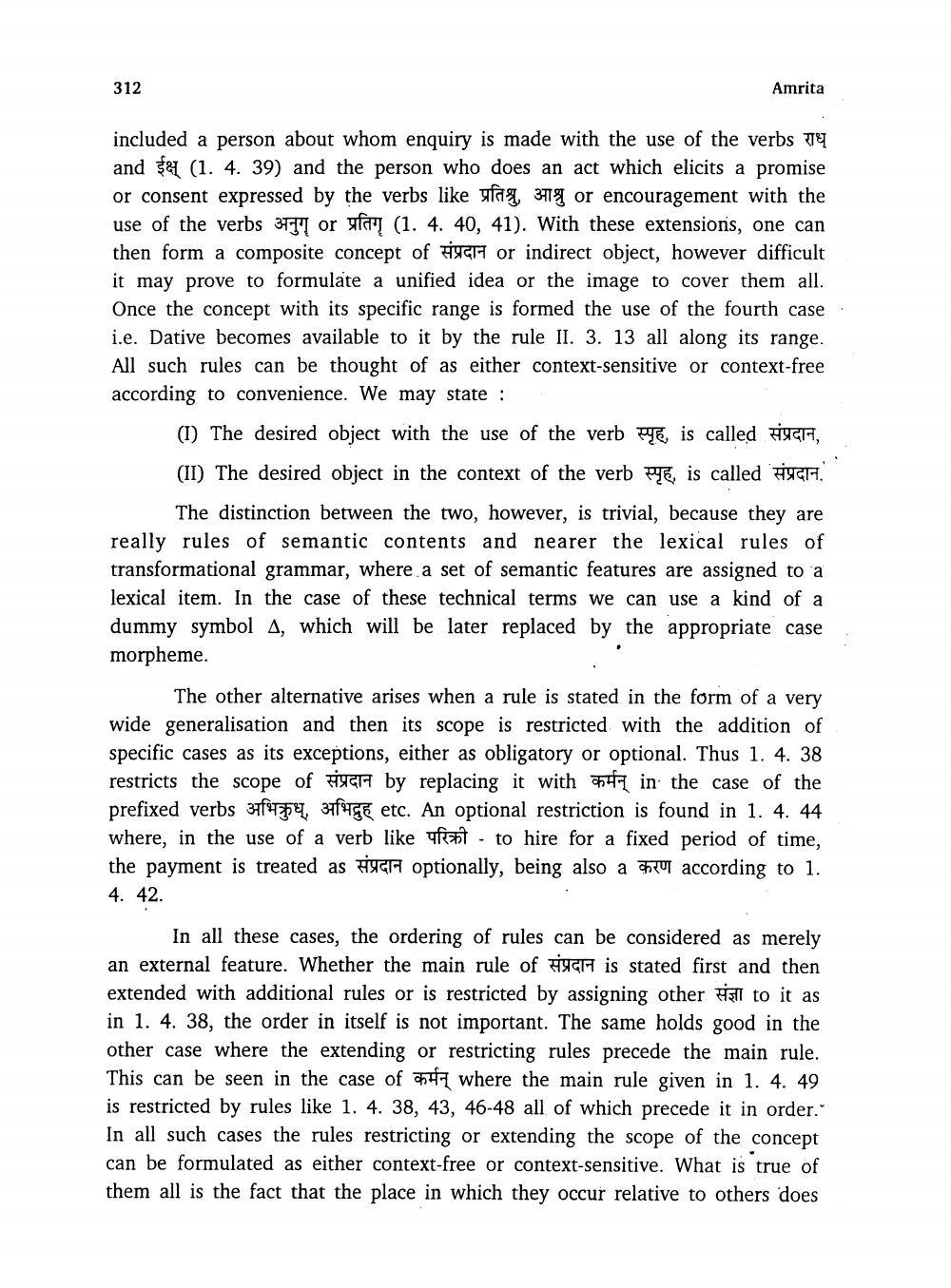________________
312
Amrita
included a person about whom enquiry is made with the use of the verbs and (1. 4. 39) and the person who does an act which elicits a promise or consent expressed by the verbs like fag 3 or encouragement with the use of the verbs or f (1. 4. 40, 41). With these extensions, one can then form a composite concept of or indirect object, however difficult it may prove to formulate a unified idea or the image to cover them all. Once the concept with its specific range is formed the use of the fourth case i.e. Dative becomes available to it by the rule II. 3. 13 all along its range. All such rules can be thought of as either context-sensitive or context-free. according to convenience. We may state:
(I) The desired object with the use of the verb स्पृह, is called संप्रदान, is called
(II) The desired object in the context of the verb
The distinction between the two, however, is trivial, because they are really rules of semantic contents and nearer the lexical rules of transformational grammar, where a set of semantic features are assigned to a lexical item. In the case of these technical terms we can use a kind of a dummy symbol A, which will be later replaced by the appropriate case morpheme.
The other alternative arises when a rule is stated in the form of a very wide generalisation and then its scope is restricted with the addition of specific cases as its exceptions, either as obligatory or optional. Thus 1. 4. 38 restricts the scope of by replacing it within the case of the prefixed verbs 3 g etc. An optional restriction is found in 1. 4. 44 where, in the use of a verb like fat to hire for a fixed period of time, the payment is treated as optionally, being also a according to 1.
अभिक्रुध्,
4. 42.
In all these cases, the ordering of rules can be considered as merely an external feature. Whether the main rule of His stated first and then extended with additional rules or is restricted by assigning other to it as in 1. 4. 38, the order in itself is not important. The same holds good in the other case where the extending or restricting rules precede the main rule. This can be seen in the case of where the main rule given in 1. 4. 49 is restricted by rules like 1. 4. 38, 43, 46-48 all of which precede it in order." In all such cases the rules restricting or extending the scope of the concept can be formulated as either context-free or context-sensitive. What is true of them all is the fact that the place in which they occur relative to others does




